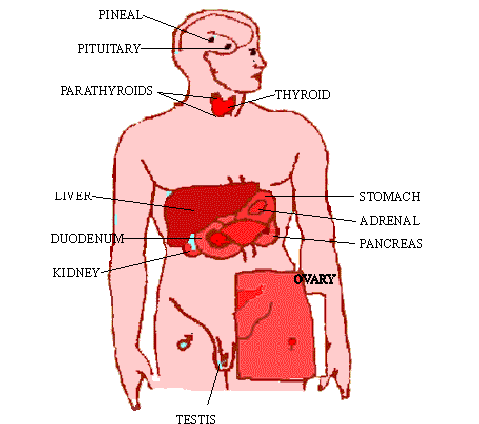All animals contain chemical components produced
by exocrine or endocrine glands. Exocrine glands release
their chemicals into ducts. The endocrine glands (Figure 22.1) release
their secretions, the hormones, directly into the
blood-stream.
These hormones are then carried to other parts
of the body (target organs), where in extremely minute quantities,
they elicit cellular responses. E.H.Starling (1902) suggested the
name ’hormone’ (Greek meaning "to stimulate" or "to
excite") for these chemical messengers or transmitters.

Click here for enlargement
Figure 22.1 The position of the main endocrine
glands in the human body
Hormones are specifically-acting organic compounds
with varying chemical compositions, usually steroids, proteins,
peptides or amino acids. Based on their general roles, hormones
are metabolic (stimulate or retard metabolic activities),
trophic (regulate rate and secretion of other endocrine glands)
and morphogenetic (affect rate and development of various
parts).
Hormones are an additional means of coordination
and communication. Together with the nervous system, the
endocrine system forms a combined neuro-endocrine system.
The hormone pathway is by the blood stream, while nervous
pathway is by the neuron-reflex arc.